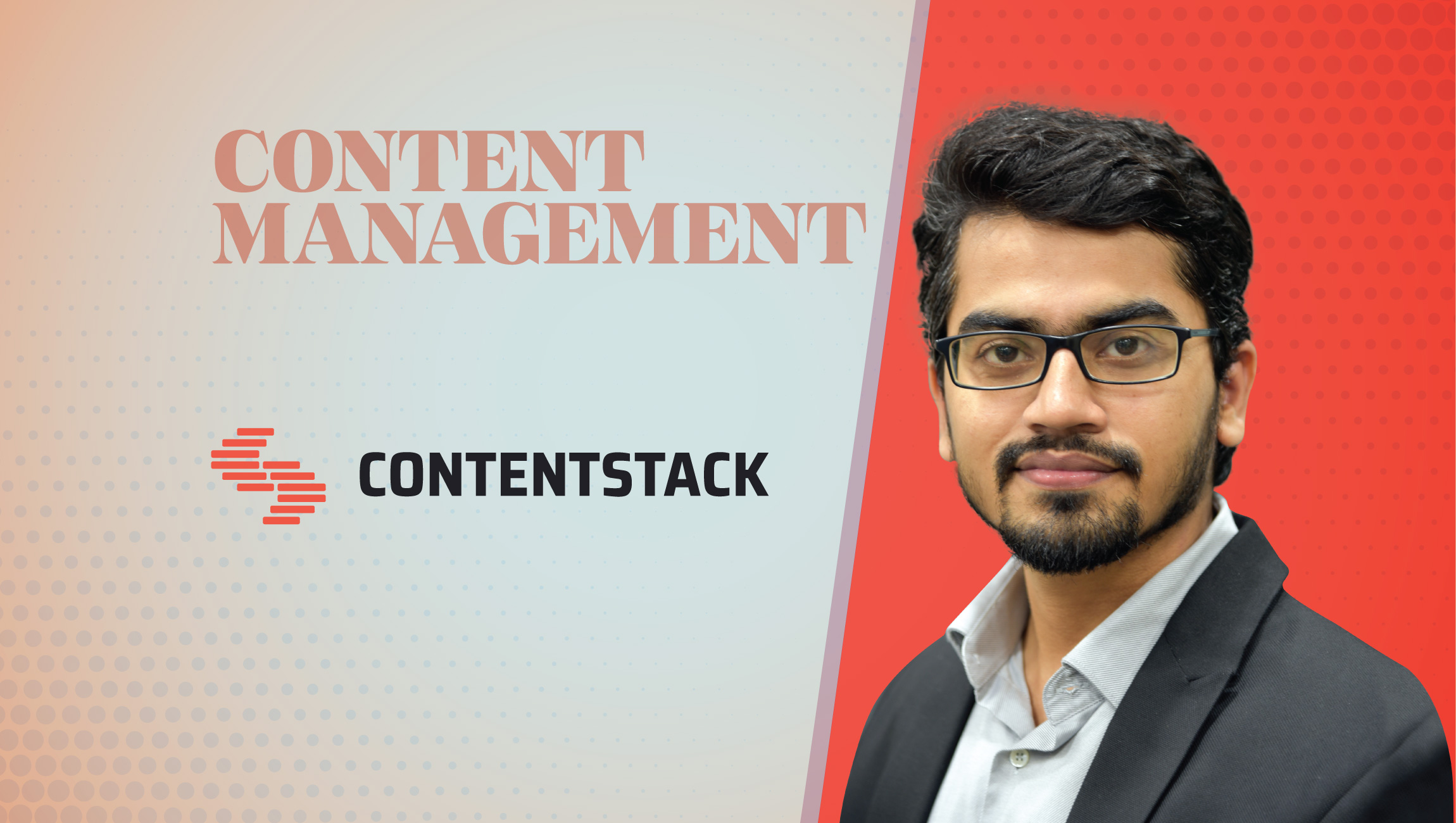Could you tell us about your role and the team/technology you handle at Contentstack?
I am the VP of Engineering at Contentstack and lead our Engineering organization in India, which includes Product Innovation and Development, Project Management, Cloud Operations, Service Reliability, Security, QA, and docs. Our team is the innovation engine at Contentstack and uses some of the most cutting edge technologies to make Contentstack the most powerful, most trustworthy and most cherished platform for our customers.
What is the idea behind launching a Headless CMS?
The main idea is to enable users to build and manage great digital experiences. This involves providing a superior product that alleviates the pain points of both business users as well as developers.
Business users want the ability to publish dynamic content on any type of platform. Technology is evolving at a breakneck pace, and businesses want to engage with users on all possible touchpoints. Contentstack, as a headless CMS, allows them to engage users with personalized content throughout the customer journey and helps in building and managing great digital experiences.
On the other hand, we make it extremely easy for developers to ship projects. First, we allow building apps using any language, technology, or platform. Second, structuring pages and sections of the app is as easy as dragging and dropping elements. Lastly, integrating with third-party apps is pretty straightforward. This cuts down the time-to-market drastically.
On the technical front, how does Contentstack differ from traditional CMS?
These two are quite different in terms of the technology stack, architecture, and approach used.
Traditional CMSes have monolithic architecture, where the frontend (i.e., the presentation layer), the backend (i.e., the application layer), and the content are tightly coupled. So, when a page is requested, rendering is done on the server side, and an HTML page is pushed to the frontend. This makes the whole architecture streamlined for web pages but otherwise quite inflexible. Moreover, traditional CMSes built their app first, and then developed APIs when the need arose. So, their APIs are mostly just an add-on afterthought. The result in an artificial set of APIs that are not built appropriately and not thoroughly tested.
With Contentstack, it’s very different. We are a modern content management tool that is built with an API-first approach. This means that the APIs are created first and alongside their presence in the management console/product UI. This approach forces our developers to design and use the APIs for our own app, and the result is a set of more concrete and real-world APIs that are thoroughly tested.
Contentstack provides the backend that serves a repository to organize and manage content. And there is no frontend attached. This opens up the possibility to deliver content on any interface that supports APIs (for e.g., web, mobile, smartwatch, digital billboards). So, your content is future-proof, and there is a scalability. Moreover, this separation ensures that developers can create their frontend in using any technology or language.
Could you tell us about the various unique features tools and technologies in Content Management Systems that can tie into your platform?
We know it’s difficult to create a CMS that caters to the ever-increasing demands of today’s businesses. So, we built our product in a way that can be extended by the users to suit their requirements.
We offer ‘Extensions’ through which users can extend the capabilities of Contentstack. So, adding functionalities like translation, personalization, auto content analysis and classification (through AI), traffic analytics, etc. within our CMS becomes easy. We offer a vast extension library, and we also encourage customers to create their own extensions.
What kind of Data Science and Coding did you apply to build this product?
Contentstack has adopted a microservices approach. It is not a monolithic CMS built as a single unit. It’s modular; it’s a suite of several independent, small components, that work independently but are connected via APIs. Such an architecture makes individual components easy to modify and test, provide scalability, and is more reliable since a glitch in one does not impact the rest.
What kind of feedback and technical recommendations do you get from the Customers and Sales?
We have built a world-class product and we provide unmatched customer service. We rank highest in customer satisfaction among our peers and we are chosen as one of the best content management software of 2019 by customers. Our customers have shown great trust in us, and that’s the best feedback one can ask for.
But ours is a very competitive market, and staying ahead means leaving no stone unturned. Our Sales team talks to potential customers day in and day out, and they are a great source of technology trends and requirements that the market is demanding. Their input helps us innovate.
What challenges did you face in developing best-in-class UI UX product? How did you overcome these?
UI UX is all about perspective. What one customer thinks is the best UI UX can probably be a terrible one for the other. Having a best-in-class UI UX that resonates with everyone is an ongoing challenge. But we strive to keep it simple and uncomplicated. Plus, we have a great UX team that thinks from the ground up and make things easier for our customers.
What is your opinion about a lot of SaaS and Cloud CMS shifting their attention toward the Open Source Programming communities – what kind of precedent does it set for Enterprise-based Devops such as yours?
Open source plays an important role in many healthy technology categories. We contribute to open source ecosystems and even incorporate some open source software as part of our technology stack. In our experience, enterprise customers care more about how quickly you respond to their needs (both in terms of innovation and product capabilities, as well as via direct support) than what specific license the product uses. We’ve found a model that is highly responsive to feature requests and provides customers a white glove support experience that they can’t get elsewhere.
Mayank is the Head of Engineering at Contentstack. He has over a decade of experience building software products that disrupt industries and win awards. His specialties are cloud and SaaS architectures, and he enjoys solving complex digital problems.
Contentstack combines the best of Content Management System (CMS) and Digital Experience Platform (DXP) technology. It enables enterprises to manage content across all digital channels and create inimitable digital experiences. Contentstack pioneered the headless CMS category and combines content infrastructure with the industry’s #1 integration capabilities to deliver a best-in-class Content Experience Platform (CXP). Renowned for earning the highest customer satisfaction in the industry, Contentstack has been recognized as the leading innovator in the Dynamic Experience Management category. The Contentstack platform was designed from the ground up for large-scale, complex, and mission-critical deployments. It is the preferred API-first CMS for SAP customers.











